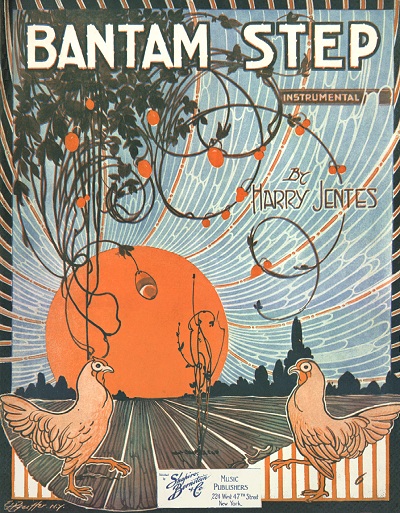
|
Edward Henry Pfeiffer (August, 1868 to February 15, 1932) | |
 Selected Covers (Hover to View) Selected Covers (Hover to View) | |
Edward Pfeiffer was born in New York City in August, 1868 to a German immigrant father Henry Pfeiffer and New York native mother Mary York. Some sources indicate a birth year of 1869, but the 1870 and 1880 census records suggest the earlier year. Edward was familiar with art production at a young age since his father reportedly worked as a professional engraver, although Henry was listed also as a tailor. Edward had two older siblings, including Emily (1859) and Julius (1862). According to a brief biography assembled by his granddaughter, Ann M. Pfeiffer Latella, the young man showed a predilection and interest for art at an early age, probably due to Henry's creative influence. In the 1880 census the family is shown living in Manhattan with Henry working as a tailor and Emily as a dressmaker.


Edward dabbled in costume jewelry design and some illustration work for publications such as magazines and newspapers, but is best known for his often stunning sheet music cover art, in part because his signature appears on it more often than the other works. At some point in his youth he suffered a leg injury that resulted in a lifelong limp, and the eventual onset of osteomyelitis that contributed to his death in 1932. His pain was such that he designed his own orthotic device to help him walk more comfortably. In the 1900 census, married by this time to Fannie McCracken, he was listed as a designer. Edward Pfeiffer Jr. (Ann Peiffer's father) was added to the family around 1901. Before 1910 Edward Sr. was showing up in Manhattan directories and, and ultimately in the 1910 census as an illustrator with his own studio. Fannie and Edward Jr. were still in the home, but she would soon leave and their son would be largely raised by his grandmother Mary.
Less known about Pfeiffer was his work as a community activist and writer. He contributed articles to various publications, usually about a cause. One example is Making Your Neighborhood Safe for Democracy in a 1919 edition of The Outlook. In his role as the Publicity Secretary for the Central Mercantile Association and later the Executive Secretary of the Chelsea Neighborhood Association, he wrote about a boy's home in Chelsea, a community on the west side of Manhattan. In 1915 he had made a case for creating a modern public school for the children in the neighborhood on the site of some older buildings that could be torn down for the new facility, stating that:
"Each of the three old buildings was built prior to 1869... Not one is fireproof or partially so. Eighty per cent of Chelsea's classrooms are crowded beyond their legal capacity. Wardrobe and drinking facilities are inadequate and toilet facilities barbaric. Since the sites of the old public schools are valued by the city's real estate bureau at $600,000 and the proposed new school would cost only $434,000, by vacating these outworn buildings and selling the sites $166,000 would be realized for other school purposes."
Pfeiffer was also part of the Chelsea Fresh Air Society which secured "outings and vacations for the need poor of Chelsea District." His name was found on the boards of other charities as well. By 1920 Edward showed as divorced from Fannie, but still working as a commercial artist. As of the early 1930s Edward was infirmed and in managed care, partly due to his earlier leg injury, where he eventually passed on in early 1932 at age 63.
Edward Pfeiffer's first covers date back to 1892, and his volume of work spans over 100 publishers, indicating that his reputation as a freelance artist was likely considerable. The Pfeiffer signature varied in scope from the simple EHP to Fifer to the official sounding Pfeiffer Illustrating Co. However, the majority of his works featured the unique E.H. Pfeiffer N.Y. script, which is as recognizable to collectors as the Disney signature is to children of all ages. While many of his works reflect some representation of the title of the piece they adorn, he was particularly gifted with drawing floral motifs and attractive women, exercising careful consideration for near-photo realistic shading. Pfeiffer was also an early advocate of what became the Art Deco school of art by the late 1920s. Of particular favorites listed here are the highly stylized Bantam Step and three different versions of Wild Cherries.